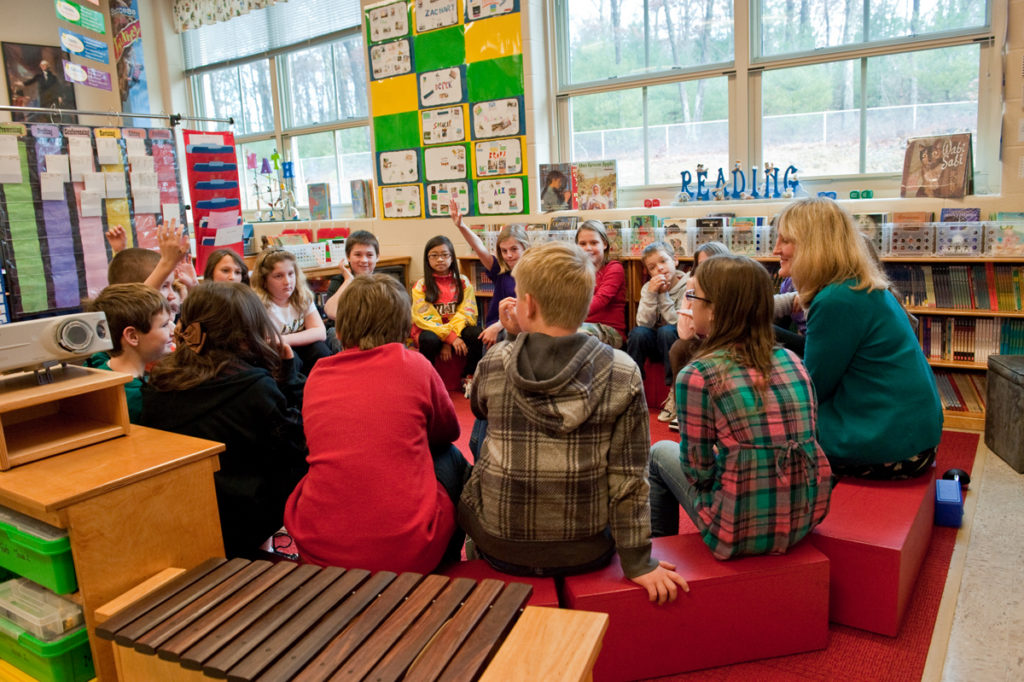
Welcome to Morning Meeting in my full inclusion classroom. Twenty-one first graders sit in a large circle on a brightly colored rug. I’m in a small rocking chair, my hand lightly touching one child’s back. Another adult sits behind a child, supporting him as he sits with his legs, encased in blue braces, stretched out. Wiggling beside him, another child sits on a sissel seat that encourages balance and provides tactile input. A small girl, still outside the circle, cries inaudibly at her desk.
Today’s meeting begins with a silent greeting. In our classroom community, everyone actively participates in Morning Meeting to the best of his or her abilities. So, for example, the “handshake” that students pass around the circle takes many different forms. Some children hold hands and shake firmly, others “air shake” without touching, and an adult holds up one child’s arm.
Just as the greeting ends, the child who had been crying, now calm, joins us. A classmate greets her warmly. Then it’s Samuel’s turn to share. Pleased to have his turn as the star, he sits in the special comfy chair, his para supporting him physically from behind.
Because Samuel is nonverbal within large groups, we’ve prepared for him to share by answering classmates’ questions with “thumbs up” and “thumbs down” gestures and facial expressions. To make this a positive experience for all, I’d met with a few students to think of “yes or no” questions for Samuel, and his paraprofessional is ready to call on those classmates for him. But now, as I stand with my back to the class, poised to write the first question, Samuel makes his own choice by pointing to Annie. Excited to be chosen, she forgets our “yes or no” protocol and asks, “Where do you like to go when you go on a vacation?”
I don’t want to step in and answer for Samuel, so I wait to see what he’ll do. He laughs, points to Jacob, his best friend, and gives him a thumbs up. Jacob stands and describes the vacation their families took together to see a moose. The class completely accepts Jacob’s being Samuel’s voice.
As I breathe a sigh of relief, I realize that inclusion in Morning Meeting doesn’t just happen. It takes careful planning and teaching. Here are four practices I’ve found particularly helpful:
Too often, children with special needs or challenges just sit in the Morning Meeting circle instead of actively participating. I’ve learned over the years that it doesn’t have to be that way. With a little flexibility and inventiveness, Morning Meeting, with its emphasis on respect and empathy, can be a time of friendly engagement for all students.
Barbara K. O’Brien has taught for more than thirty years. Including Samuel, an award-winning documentary film that features the “Samuel” named in this article, was partially filmed in her multi-age 1st and 2nd grade classroom at Beaver Meadow School in Concord, NH.